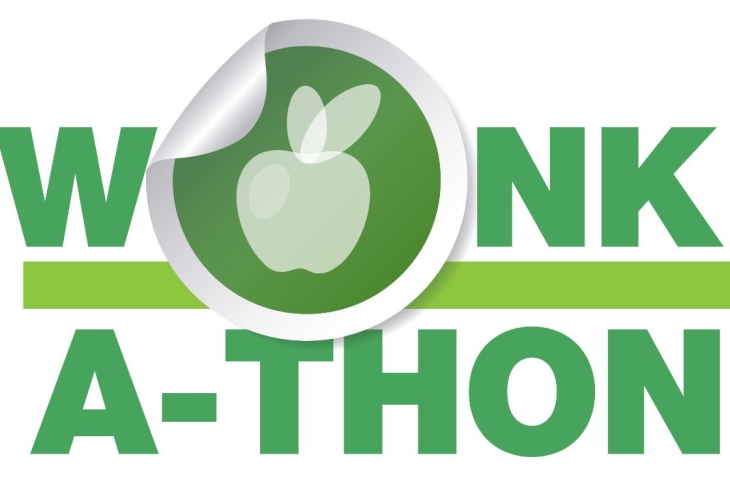Editor’s note: This essay is an entry in Fordham’s 2022 Wonkathon, which asked contributors to address a fundamental and challenging question: “How can states remove policies barriers that are keeping educators from reinventing high schools?” Learn more.
When it comes to education, the United States is looking for answers. Every week reveals a Sisyphean exercise in repeating headlines: Students from marginalized communities throughout the U.S. continue to fall behind their global peers. If reading headlines alone, teachers and students find themselves in a perpetual decline on standardized assessments—state and national—and further evidenced by the 2022 National Assessment of Education Progress (NAEP). The stories continue without tangible solutions about how to transform a system that has the potential to be transformative.
However, a change in thinking is happening. The shift is quite new for American schools, but it is a necessary shift if we aim to achieve national transformation. The shift is away from a traditional, “Industrial Age paradigm” and toward a student-centered, inquiry-based paradigm.
Inquiry-based learning models are counter to the Industrial Age paradigm of schooling. As documented in the recent report Out of the Box: How Innovative Learning Models Can Transform K-12 Education, what we are doing in classrooms is simply not working at scale. High expectations, a belief in every student, and high standards are all key strategies, but these strategies miss what research, and many educators, say should happen: Move away from direct, disengaging, and monolithic instruction, and rather, move toward learning how to learn. Citing the report:
Our national choice is clear: We can continue to define change as it has been defined for the last forty years—tacitly accepting that the industrial paradigm of schooling is still the best way of providing education and focusing on the optimization of its impact by trying to incrementally improve its core elements. Or we can consider the possibility that the industrial paradigm itself is what must transform. Even though it was designed more than a century ago, the die it cast has severely limited the impact of well-intended efforts aimed at systemic improvement. Transcending these inherent limitations requires modernization—the development of a new paradigm for schooling that fundamentally reimagines the classroom itself so each student can fulfill his or her full potential. (p.17)
We at the International Baccalaureate Organization (IB) agree. Inquiry-based learning and learning how to learn have been core to how the IB has framed education for over fifty years, starting with the Diploma Programme. Significant research shows that inquiry-based learning is a powerful tool: Students are engaged by their own curiosities, solving the problems they identify, and being taught the habits and skills to do this for themselves.
Education has too often been a passive exercise, with a static curriculum ignoring the individual strengths and needs of young learners; this approach is no longer acceptable in today’s classroom and economy. While recent reforms have increased school accountability, assessment regimes that reinforce traditional competencies promote uninspired instruction. Inquiry-based learning is now present in close to 2,000 International Baccalaureate schools across the United States and over 5,600 around the world. The addition ten years ago of the IB’s Career-related Programme provides an ambitious graduation pathway that emphasizes personal and professional skills and capabilities to accelerate preparation for post-secondary schooling simultaneously with jump-starting career pathways and credentialing. We’ve had students go on to be chefs, automotive experts, computer scientists, even medical professionals because of the career experiences gained in the program, and the skills transfer to any path our students choose to take after graduation. Why? The Career-related Programme is both college-bound and career-bound, as it is rooted in the concepts of inquiry-based learning, but it also prepares students for the market.
As the Out of the Box report states, it takes time, commitment, and authentic leadership to move away from obsolete practices engrained in schools’ Industrial Age DNA to one grounded in inquiry. Transformational shifts take time, but the IB and other innovative learning models show that school transformation is possible, particularly when inquiry-based learning is the foundation from preschool to post-secondary schooling.
The International Baccalaureate provides an instructional educational infrastructure: the inquiry-based curriculum already noted, along with a comprehensive assessment system designed to hold students and schools to rigorous standards, professional development that accentuates putting the student at the center of learning, promotion of sustained school self-reflection and continuous improvement to meet world-class educational aspirations, and leadership training to make all this happen.
Policy recommendations can accelerate transformation. At the federal, state, and philanthropic levels, funding for revised learning models is the quickest way to make this happen. Secondly, policies allowing for assessment flexibility are key. We know that, as accountability outcomes motive school leaders and teachers, how leaning is measured will drive what is taught. As a former director of assessment at the IB said: “What you test is what you get.” Schools adopting innovative learning approaches should not be constrained by industrial-style assessment. In New York State, the Performance Learning and Assessment Pilot (PLAN) is a perfect example of a state taking leadership on this key issue, using the IB to help inspire a retooling of graduation requirements. Several other states encourage students to focus on obtaining the IB diploma, with its inquiry-based focus, as an alternative pathway to high school graduation. These forward-thinking states also provide additional incentives to accept the academic challenge of an IB education by rewarding students with college credits in their public college system. Thirdly, the U.S. could amplify change through school innovation and empowerment zones, along with other redesign approaches build innovative infrastructure.
Leading change, particularly in schools looking to break the mold, is difficult. Creating the policy and assessment conditions to transition from the Industrial Age paradigm of schooling to an inquiry-based model is critical for allowing school transformation to take place at a national scale. With such a policy environment, the United States could turn the page from being perpetually left behind to becoming a global leader in public education.

